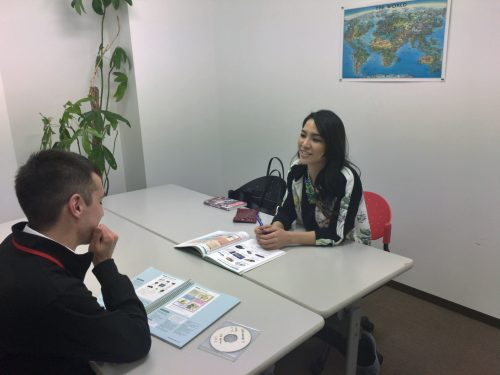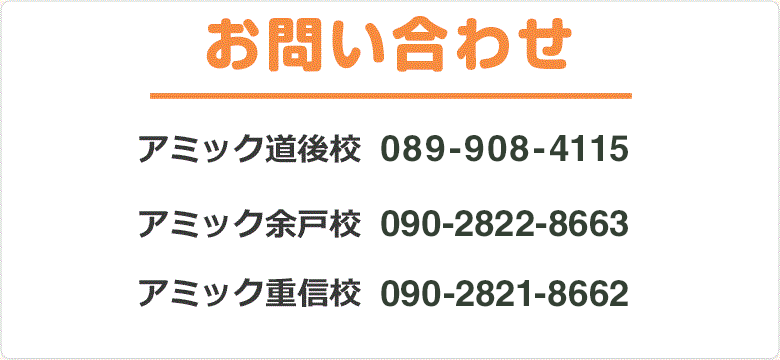ブログ
「英会話・英語 アミック」No Plans
Golden Week is quickly approaching but I don’t have any big travel plans. It may sound funny but actually I couldn’t be happier. Typically, vacation brings to mind something a bit more exciting than staying at home for a week, but in my case I couldn’t imagine anything better right now. I have many personal goals for this break that I can only achieve alone so I will be busy in a different way than most others I assume. Of course, I do love traveling (and I will later this year), but a bit of solitude in the Iyo countryside is all I need at this time in my life.
Joe
英会話・英語 アミック Drop bears
Have you ever heard of a bunyip or a yowie?
When I was in primary school we were taught about Aboriginal mythical creatures. The bunyip is a large swamp creature and the yowie a giant, ape-like creature. Having quite an imagination at that age, I believed in the tooth fairy, mermaids and unicorns. So, it wasn’t hard for me to believe the stories I was being told.
Recently, I’ve heard stories about drop bears. It is a vicious, flesh-eating koala (which in fact is not a bear, I might add) that weighs over 100 kilograms. Waiting in the tree tops, they attack people walking below by dropping on them.
Like other urban myths, such as Bigfoot and The Lochness Monster, the drop bear is a modern hoax designed to scare and amuse. Australian Geographic even ran a piece on April Fool’s Day claiming that drop bears preffered to attack people who didn’t have an Aussie accent.
So, if you ever decide to go to Australia and camp in the bush, you should protect yourself by smothering Vegemite all over your body…and don’t forget to look up!
英会話・英語 アミック When and where would you go?
There are so many wonderful stories about time travel, the settings are throughout history and the future, describing utopias and devastation. The wonderful thing about this literature is that it is only limited by our imagination, we create the laws, rules and parameters that time travel follows. If it’s a person or vehicle that activates the shift, whether the experience is merely observation or interaction and the consequences of any interactions that may occur.
There are many places and times that I would be interested in visiting if it were possible to travel through time and space. I am fascinated by the ancient Egyptians, intrigued by dinosaurs, curious about the beginning and end of the universe. I think I would prefer the encounters to be observational, at least for the trip to see the dinosaurs!
Would you prefer to travel forward or backward in time?
英会話・英語 アミック Hay fever
Hay fever is a common condition that shows signs and symptoms similar to a cold with sneezing, congestion, runny nose and sinus pressures.
Hay fever is caused by an allergic response to airborne substances, such as pollen – unlike a cold which is caused by a virus.
The time of year in which you get hay fever depends on what airborne substance you are allergic to.
The substance that causes an allergic reaction in hay fever is called an “allergen”. For the majority of people, those who do not get hay fever, these substances are not allergens, because their immune system does not react to them.
What causes hay fever?
Hay fever occurs when the immune system mistakes a harmless airborne substance as a threat. As your body thinks the substance is harmful it produces an antibody called immunoglobulin E to attack it. It then releases the chemical histamine which causes the symptoms.
There are seasonal hay fever triggers which include pollen and spores that will only cause symptoms during certain months of the year.
The following are some examples of hay fever triggers:
Tree pollen – these tend to affect people in the spring.
Grass pollen – these tend to affect people later on in the spring and also in the summer.
Weed pollen – these are more common during autumn (fall).
Fungi and mold spores – these are more common when the weather is warm.
「英語・英会話 アミック」ミスユニバース
ミスユニバースの愛媛県代表に選ばれた福岡佳奈子さんは、全国大会に向けて今様々なレッスンをされていますが、アミックでも英会話をサポートさせて頂いています(o^^o)v
今週からは東京に拠点を移しての活動になるとのことで、今後はスカイプレッスンに切り替えての指導になります。
医師でもある佳奈子さん。美貌と知性を兼ね備えて、尚且つ努力を惜しまないその姿勢は素敵です。
レッスンの様子は、本日14日夕方6時15分からの南海放送ニュースCh.4の中で放送されるそうです。
ぜひ、皆さんも佳奈子さんを応援してくださいね(^_^*)/

「英会話・英語 アミック」Snapchat
I’m definitely not one to endorse (or condone) using any form of social media, but I will admit that I’ve been having fun keeping in touch with a small group of friends back in the United States by communicating through Snapchat. If you’ve never used this application, basically you mostly communicate by sending very short videos (I believe 10 seconds is the limit) and you can also do a bit of private messaging. The interesting thing is that all of your video uploads can only be viewed and then replayed once, and all of your messages will disappear after the window is closed. It may sound strange, but it’s refreshing in an age of endless digital content uploaded on a daily basis. It’s also fun just to see a little moment of a person’s life instead of a long-winded video that no one has time to view anyway. It’s been my favourite way to communicate online recently because it connects me to people that I really miss but not in an overwhelming way.
Joe
英会話・英語 アミック Thai New Year
When I lived in Thailand a few years back, I always got excited about celebrating Songkran. Songkran is celebrated on April 13th and marks the Thai New Year. Depending on the location, it is usually a three-day holiday that is famous for its water festival.
In the morning, families visit temples and offer food and new robes to monks. Water is poured over Buddha statues which symbolizes cleansing and washing away bad luck. The main water festival is most popular amongst young people. In the past, the custom involved sprinkling scented water on people. Nowadays, it is basically a huge water fight! Streets are lined with people ready to drench you with water pistols, cups and buckets of water and even low pressure hoses. They put wet, chalky powder on your face as a blessing and for protection against bad luck.
When I first experienced Songkran, I had a blast…the first two days. By the third day, I had had enough and was using the back streets and alleys, dodging people to try and avoid getting soaked. But, wherever I turned there was always someone with water waiting to bless me!
สวัสดีปีใหม่ - Sawadee Pee Mai! (Happy New Year!)
【趣味で英語力アップ】好きな事を英語で検索してみよう!
みなさま、こんにちは!
急にお味噌汁が恋しくなり、スーパーに買いに走ったお~じろうです(*・ω・)ノ
なぜだかわかりませんが、年に1度はこういう事があります。。。純日本人ですね><
さて、本日は趣味とネット検索を活かして英語力アップしてみよう!というお話です。
お~じろうは音楽好きなのですが、
特にジャズやドラムについて海外のサイトをチェックします。
例えばJazz Timesという下記のサイト
https://jazztimes.com/
最近の海外のジャズミュージシャン情報を知るのに重宝しています。
よく贈り物でJazzのCDをあげる際にも参考にしています。
下記のNewsなどを読めば単純にTOEIC対策にもなります。
https://jazztimes.com/news/ethan-iverson-leave-bad-plus/
TOEICのテキストばかりでは飽きてしまう方には
こういったリーディングはとてもオススメです。
自分の知りたいことなので、読んでいても疲れません。
TwitterなどのSNSは利用していないお~じろうですが、
ネットでいろいろなミュージシャンのウェブサイトをチェックしたり、
Youtubeでインタビュー動画を観たりするのは大好きです。
例えばジャズドラマー ケンドリック・スコット
http://kendrickscott.com/
https://www.youtube.com/watch?v=b9SxDV2SJAU
例えばジャズコンポーザー マリア・シュナイダー
http://www.mariaschneider.com/default.aspx
https://www.youtube.com/watch?v=Vl7ngJ6Tnnk
これだけでもかなりリーディング、リスニングのトレーニングになります。
日頃から英語試験のために英語学習をがんばるのは目標があっていいのですが、
それだと息切れしてしまう方もたくさんいると思います。
まずは自分の好きな事を英語で少しだけ検索してみてはいかがでしょうか?
中高生や大学生、大学院を目指す社会人の方なら、
興味のある大学のウェブサイトをチェックしてみるのも面白いですし、
モチベーションアップにつながります!
https://www.stanford.edu/
https://www.cam.ac.uk/
https://www.berklee.edu/ (←密かに母校を入れてみる。。。><)
その他、憧れの海外の企業を検索したりするのも良いですよ!
それ以外にもちょっと語彙力が必要になりますが、
健康に関する記事なども話のネタになるので時々読んでいます。
http://time.com/section/health/
https://www.nytimes.com/section/health
難しい経済や政治の話が得意な方はいいですが、
TimeやNew York Timesなども上記のように自分と関係の近い記事なら面白く読めると思います。
ぜひ、夢中で読んだり聴いたりできるサイトを見つけてみてください><
英語力アップ間違いなしです!
あとは、自分の趣味について英語で語りたくなったらアミックの無料体験に来てくださいね(*・ω・)ノ
それではみなさまHave a nice day!!
【TOEICリーディング対策】公式問題集を使ってPart 7対策
みなさま、こんにちは!
いつも行くクリーニング屋さんが忙しくしているのを見て
「春が来たんだなぁ。」と感じたお~じろうです(*・ω・)ノ
こんな季節の感じ方もあるんですね。
クリーニング屋さん、がんばってください><
さて、本日はTOEICリーディング対策の方法についてちょこっとお話できればと思います。
よく生徒さんから
「リスニングはできたけど、リーディングが伸びませんでした。どうしたらいいですか?」と質問されます。
現在の点数によって答えは様々ですが、
基本的に200点台(またはそれ以下)の方は単語と文法の基礎を勉強するだけでも伸びると思います。
問題は300点台(リーディングのみの点数)の方ですが、
こちらは単純に読む訓練を積んでいない方が多い気がします。
時々、「市販の問題集をたくさん買って勉強しているのだが、イマイチ点数が伸びない。」との話を聞きます。
そこで下記の質問をします。
「ちゃんと長文を最初から最後まで読んでいますか?」
返ってくる答えは大抵、下記が多いです。
「設問を読んで必要な所だけ読んでいます。」
それはテストの時(または直前期)にやったらいい話で、
普段の英語学習でやる必要はないのではないかなと思います。
ですので、お~じろうのクラスでは生徒さんには、
特にPart 7の練習の時は、時間がかかるのは構わないので、
長文を最初から最後まで読んでから設問を見て解くようにお伝えしています。
確かに答えとは関係のない所も読まなければなりません。
ですが、今回は関係なくても実際のテストでは
答えと関係のある表現やトピックが実はたくさんちりばめられています。
特に公式問題集はそのオンパレードです!
解けたら終わりではなく、長文全てを理解することを目標にしてみてください。
実はそれができるとPart 5 & 6の点数アップにもつながります。
数年前に実際のテストであったことですが、
Part 5の語彙問題で悩んでいた問題の答えがPart 7の長文に出ていたことがありました。
(すぐにPart 5に戻って答えを修正しました(;^ω^)お~じろうもまだまだですね、がんばります><)
【読む】というのは面倒に感じるかもしれませんが、実は一番力が付く方法です。
そこで、オススメなのが、公式問題集の別冊『解答・解説』を使った勉強法です。
リーディングが300点台の方だと、長文も7割程度しか理解できていないことがほとんどです。
別冊『解答・解説』にはPart 7 の長文が丸ごと載ってあるだけでなく
日本語訳やWords & Phrases、Expressionsなど【読む】うえで助けになってくれる情報が満載です。
下記は実際の使い方です。
※自信のない方は先に日本語訳を読んでおくのも手です。
①まずは英語の長文を読んでみる。
②わからない単語などは日本語訳などをヒントに確認し英文の下に書いておく。
③設問と答えの選択肢をチェックする。
④長文から答えのキーとなる箇所を蛍光ペンでマーキングする。
(これをすることで、問題とその答えの導き方の傾向がわかるようになります。
⑤余裕があれば間違えの選択肢がなぜ間違いなのかも考える。
※オプションとして主語や述語動詞をチェック(波線や下線を引いてみるなど)、
意味のカタマリごとにスラッシュを引いてみるとより文章を理解する力が付きます。
これを市販の新形式公式問題集3冊6セット分のPart7を一通りやって、
知らなかった単語や表現を復習するだけでも相当リーディングの力が付きます。
あとは普段から英語を【読む】習慣をつけることも大事です。
(これはまた別の話ですね><)
それと試験前に、すでにやったことのある模試で構いませんので、
試験形式通りに1度は練習しておくと良いです。(時間もしっかり計りましょう(*・ω・)ノ)
TOEIC本番は時間との闘いになります。
タイムスケジュールも大切になってきます。
(それもまた別の機会にお話できればと思います(*・ω・)ノ)
なかなか独学ではリーディングの勉強が進まないという方は、
ぜひアミックの無料体験を受けてみてくださいね!
それではみなさまHave a nice day!!
英会話・英語 アミック How do you tell a good story?
Each story we hear or read has a similar structure: a beginning – introducing the characters and setting; a middle – what the characters were doing and why, this usually includes a climatic and exciting event; finally an end – how the characters achieved their goal and any consequences of that. This format does not however, guarantee a good story – it is what is happening in our brain that determines whether we perceive the story as good, bad or indifferent.
So what’s going on behind the eyes? Firstly, there is a process called neural coupling taking place. This process activates areas in the brain which allow the listener, or reader, to associate the story to their own ideas and experiences. Secondly, the process of mirroring comes into effect, research shows that listeners and readers experience similar brain activity to the writer or narrator. This can determine the popularity of the story. Thirdly, the brain releases a hormone called dopamine when it experiences an emotionally charged event (remember the climatic and exciting event?). Dopamine allows people to recall more easily and with greater accuracy. Finally, the extent of cortex activities also have an major impact on a story, when we process facts two areas of the brain are activated, whereas a well told story engages many additional areas such as the motor cortex, sensory cortex and frontal cortex. This gives us more connections with the story and more avenues in order to recall in greater detail.












